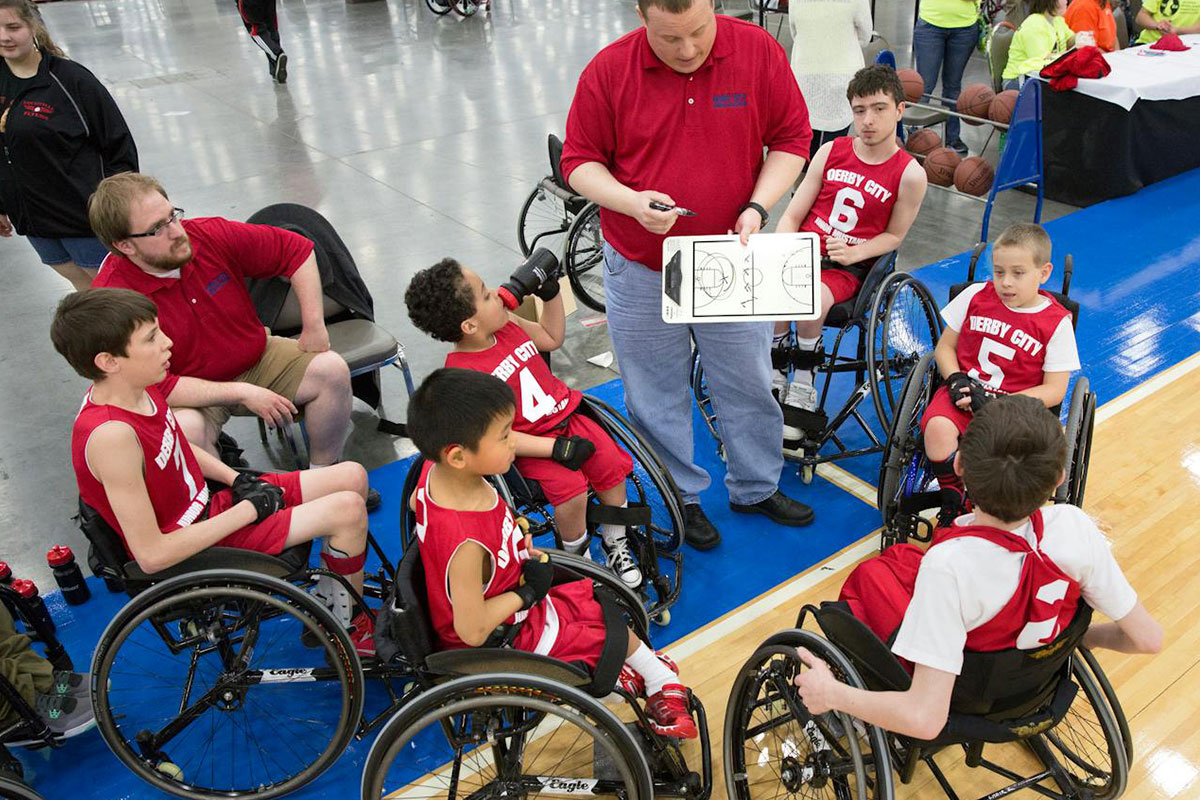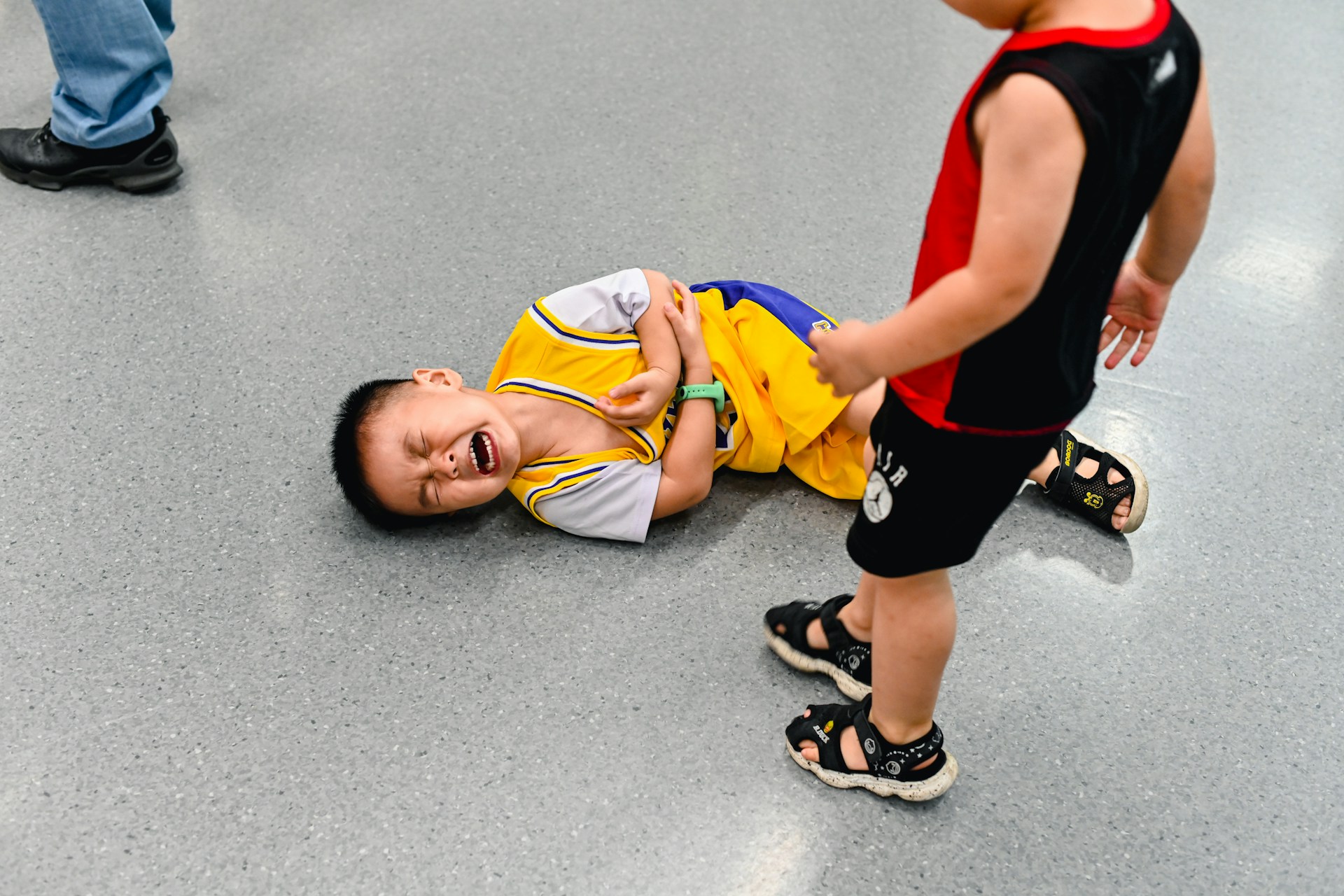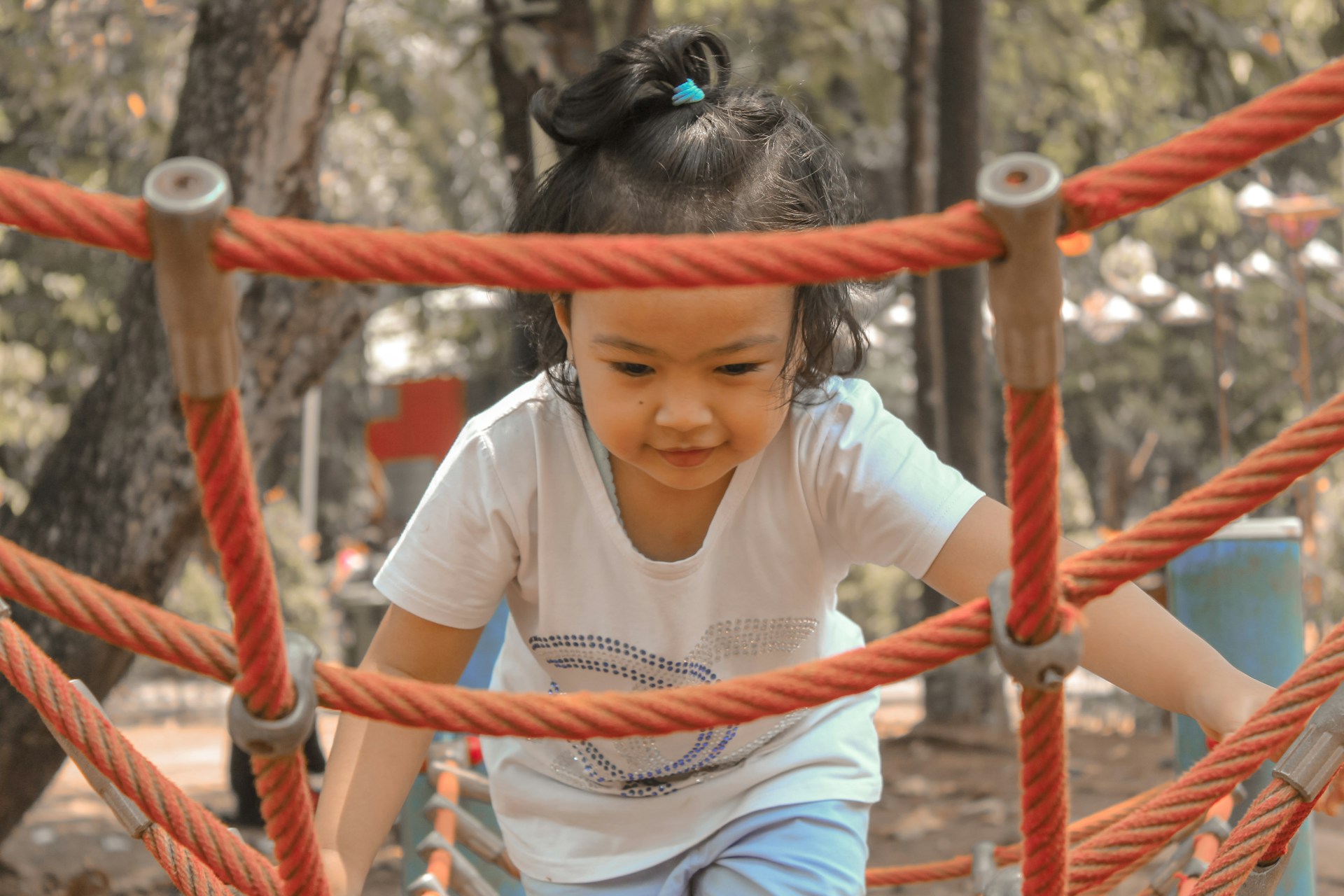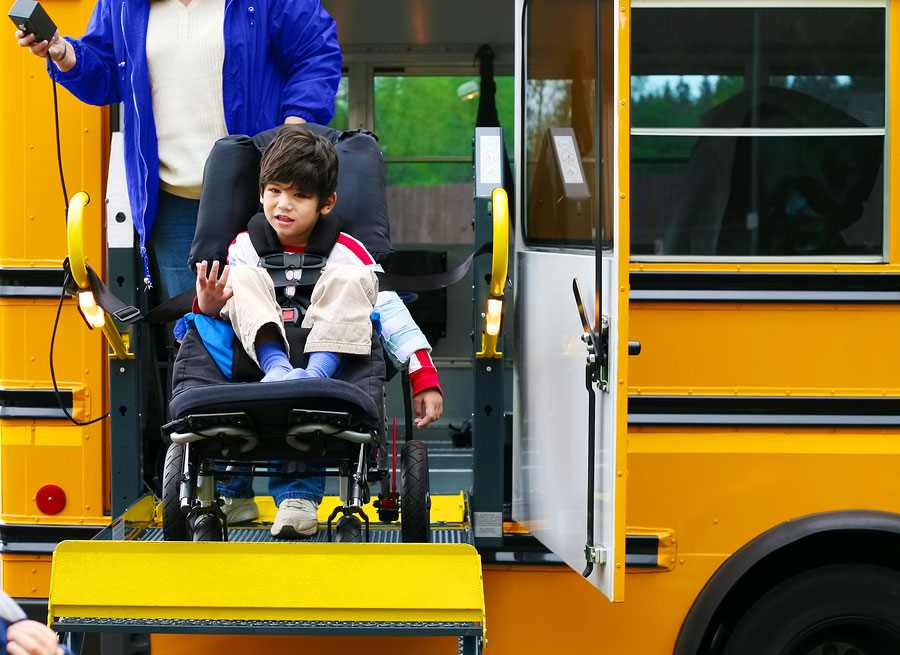
School Liability and Negligent Supervision of Children with Disabilities
Key Takeaways:
- Schools and child-and youth-oriented agencies must uphold a higher standard of care tailored to a child’s unique needs when supervising children with behavioural and physical disabilities.
- They should ensure safety through adequate supervision of children with disabilities, specialized programs and services for qualifying students, and addressing issues that can create a hostile learning environment.
- When institutions breach defined child safety standards, it can cause children with disabilities to be abused, injured, or killed.
- Parents can sue the school for negligence, and if the court determines that the breach was the proximate cause of harm, the school can be held liable for negligent supervision and associated damages, and sovereign immunity would not apply.
For schools, daycare centers, camps, after-school programs, and other child-and youth-oriented agencies, children with disabilities often present significant supervisory challenges. Institutions must uphold a higher standard of care for students with disabilities. Suppose special ed students are abused in the classroom, seriously hurt, or killed at school because of a failure to address their needs adequately. In that case, parents may sue the school for negligence, and litigation may view negligent supervision as a proximate cause of harm.
But what constitutes reasonable supervision of children with physical and behavioral disabilities? It depends on the student’s unique needs and the school’s standards for protecting that student from harm. Cases of negligence in schools can arise when schools fail to establish and adhere to tailored child safety standards in special education.
Students with developmental disabilities, autism, mental illness, or physical disability require specialized programs and services, highly qualified personnel, or one-on-one assistance to protect them from harm. Thus, when a school is aware of the characteristics and needs of a child with a disability, it must supervise the student to ensure his safety beyond the professional standard of care for the general student population. Suppose special ed students are abused in the classroom, personal injury occurs, or a student’s death stems from a hostile environment and a failure to adhere to this higher standard. This may constitute negligent supervision and can raise serious school liability lawsuits and damage claims.
In this article, an education expert witness examines the appropriate standards of care for children with disabilities in schools. We explore commonly asked questions such as “What is an example of a hostile environment?” and “What constitutes negligent supervision?”. We also examine schools’ duty of care for disabled students and courts’ rulings in various cases of negligence in schools.
Student Safety and Standards For Supervision of Children With Disabilities
Consider a school or other agency that enrolls a child with behavioral or physical conditions that require specific interventions to keep him safe. In this case, the school or agency’s duty of care for the disabled student to prevent this special needs child from getting hurt at school exceeds general or even specific supervision.
General supervision is provided in a situation like recess on the playground, where two or three teachers supervise a group of students. Specific supervision is required when a student is engaged in an activity that presents an inherent danger if the student doesn’t receive careful instruction, such as the singing tools during woodshop. For a child with a disability, however, the standard of care extends to a much more child-centered, individualized focus. In school liability and negligent supervision cases, the known characteristics of the child’s behavior or physical limitations frame an assessment of the reasonableness of supervision.
Is it reasonable for an elementary school principal to assign three playground aides to supervise 85 fifth-grade children, none of whom have any special needs, on a fenced-in playground after lunch? Is it reasonable for a residential treatment center administrator to approve an afternoon walk in a forest with 15 children and one teacher, with the knowledge that one of the children has a history of running and leaving the protective supervision of staff?
The answers are “yes” in the first example and “no” in the second.
The Individuals with Disabilities Education Act (IDEA) requires that a child with a disability who qualifies for special education and related services must have an individualized education program (IEP) tailored to their needs. When a child exhibits behavioral problems that interfere with her education or the education of others or that might cause injury to herself or other students, the IEP must include a behavioral plan.
Once the school identifies the behavioral issues and develops an intervention plan, this becomes the professional standard of care specific to the student. The IEP addresses the type and level of supervision and the duty of care for the disabled student that the school has determined necessary to protect the child from harm. Relevant school personnel must enforce this policy at all levels of the child’s education to ensure that special education students are not abused in the classroom or otherwise harmed at school. By complying with these requirements, they can avoid school liability and negligent supervision lawsuits that may ensue.
Because the child in our example above has a history of running off during class trips, the appropriate professional standard would likely require that an additional aide accompany her on trips. If another child has a history of getting out of his seat on the school bus, running up and down the aisles, and distracting the driver, the appropriate professional standard of care might be to assign him a bus aide.
If the defined standard is breached and other children or the special ed students are abused in the classroom or otherwise hurt, parents may sue the school for negligence, and that breach might be considered a proximate cause of injury. The concept of sovereign immunity would not apply. In the absence of immunity, courts have upheld student injury claims during cases of negligent supervision in schools stemming from failure to follow the appropriate standards for supervision of children with disabilities and provide a reasonably safe environment. Schools and agencies, therefore, must identify and promptly address any issues that may contribute to a hostile environment for children with disabilities.
So, what is an example of a hostile environment? In this context, a hostile environment is when a school or agency environment becomes unbearable for a child with disability due to ongoing adverse conditions that prevent them from fully benefiting from fair and equal education or threaten their safety. These may constitute instances where special ed students are abused in the classroom, failure to provide appropriate supervision, bullying, harassment, discrimination, sexual abuse, failure to provide necessary accessibility facilities, unsafe premises, and lack of specialized programs, among other issues.
Negligent Supervision
Cases of negligence in schools and agencies have stemmed from schools’ failure to effectively honor their duty of care for disabled students, causing a special needs child to get hurt at school.
Last month, a 12-year-old student with autism disappeared from a Bronx, N.Y. school for hours before he was found in Times Square. He left his classroom and was seen running down a staircase. The details of this student’s history are publicly unknown. Still, if the school had any prior experience of this student leaving his classroom unsupervised, it would have been the school’s duty to provide individual close supervision for the student. It might have been necessary for a classroom aide to be with him one-on-one during the day to supervise his movements throughout the school. The school had an obligation to consider the student’s capacity, determine whether any related behaviors would likely place him in harm’s way, and take reasonable steps to prevent damage through appropriate supervision.
The student was found in this case, and no harm was done to him. But his story could have been much different, as with the case of Avonte Oquendo, the 14-year-old boy who slipped past a security desk and disappeared from his Queens, N.Y. school last October. Oquendo, who has autism and cannot speak, was missing for months before he was found dead. The investigations into the circumstances of both cases continue.
In another example of potential negligent supervision, the City School District of New Rochelle, N.Y., was ordered last August to pay compensatory damages after it failed to evacuate two students in wheelchairs during a fire emergency. The U.S. Attorney for the Southern District of New York found that New Rochelle High School violated the Americans with Disabilities Act by not having an evacuation plan for students with mobility impairments. The students, one of whom has cerebral palsy, were left in a third-floor classroom while the rest of the school was evacuated. School officials, who have contested the U.S. Attorney’s findings, said their plan for supervision of students with disabilities in an emergency was to get them to a “safe room” where first responders can find them. Still, the safe room closest to the students required maneuvering down the stairs. However, New York State law requires a complete evacuation in the event of an emergency.
Even if the school had been found in compliance with the law, this plan was inadequate for a child in a wheelchair. The school had a duty to consider the students’ disabilities and their inability to navigate stairs and to plan adequately for their evacuation in the event of an emergency. From our earlier discussion of “What is an example of a hostile environment,” this borders on discrimination and failure to provide proper disability facilities.
Court Rulings on School Liability and Negligent Supervision Cases
Numerous cases of negligence in schools have also involved a lack of or inadequate supervision of students when using equipment in the laboratory, on the playground, and during other activities. However, even though a school has a higher duty of care for disabled students, not every student injury results from negligence by the school or its personnel. Again, liability depends on the circumstances. Let’s take a look at two cases.
In Montana, a teacher had forbidden a developmentally disabled student from using specific equipment in the playground. Her “rule” became the professional standard of care for this child. On the day he slid down a pole on this equipment, fell, and fractured his tibia, his teacher was absent. At the time of the accident, the substitute teacher and another were on the playground supervising students. The boy’s parents decided to sue the school district for negligence in failing to manage their son properly. A jury determined that there was no negligent supervision on the part of the substitute teacher and ruled in favor of the district.
The parents appealed to the state Supreme Court, which noted that a verdict cannot be reversed unless supported by substantial and credible evidence. In this case, the substitute teacher testified that she was supervising five students, all of whom required special attention. All parties agreed that the substitute teacher had a duty to supervise the student closely. However, the fact that the substitute had failed to see this student climbing the equipment did not constitute a breach of duty (Morgan v. Great Falls School Dist.. No. 1, 995 P.2d 422 [Mont. 2000]).
In this example, the professional standard of care was that the student would not play on the equipment. However, the focus in this case was not on this standard but on the general supervision provided at the time. Regardless of the standard, the court determined that because the substitute teacher provided the required supervision, the school was not liable for negligent supervision resulting in the injury. In other words, the teacher was doing her job. Would the result have been different if the complaint had focused on the playground rule set by the teacher and the school’s duty to ensure that the substitute teacher enforced it?
Parents can also sue the school for negligence when negligent hiring, supervision, and retention of school bus drivers and other school employees cause a special needs child to get hurt at school.
In Louisiana, a student with spina bifida and hydrocephalus was unable to walk. The school provided transportation in a specially equipped bus. A bus aide was required to secure the student in the wheelchair with a lap restraint, but neither the wheelchair nor the bus provided a means of ensuring the student’s upper body was secure. After picking up the student, the bus driver backed the bus into a car as his mother watched. She asked the child if he was hurt. The boy didn’t respond, and the mother permitted him to continue to school. When he returned home with a bruised forehead and complained of head and back pain, the family took him to an emergency room. The family sued the school board for negligent supervision, seeking reimbursement for treatment costs. A court found the school liable for the boy’s injuries.
An appeals court found ample evidence that the student’s injuries were caused by the accident. There was also sufficient evidence to show that the student had suffered ongoing physical pain as a result of the accident. The court affirmed the judgment (Marshall v. Caddo Parish School Bd., 743 So. 2d 943 [La.Ct.App 1999]).
In this case, would the student have been protected from harm if the child’s upper body had been secured? More than likely, he would not have been injured. This raises an important question: Would a reasonable person know that if the child’s upper body was not secure in his wheelchair and there was an accident, the child would likely become injured? If injury is foreseeable, those in charge are responsible for ensuring safety and avoiding cases of negligence in schools. This student’s safety could be reasonably assured if those in charge had provided him with a wheelchair and a bus equipped to secure him across his lap and upper body.
Summary
When schools and other agencies with a duty of care for disabled students know that a student’s behavioral or physical disability may lead to risk that special needs child getting killed or seriously hurt at school or place others at higher risk, they have a higher duty to supervise students in a manner specifically appropriate for the child’s condition. A reasonable standard of care is tailored to the student’s unique history and needs. Failure to establish and follow such a standard and negligent supervision of students with disabilities may attract costly cases of negligence in schools and leave a school liable in the event of a casualty.
Suppose the symptoms of a child’s disability suggest to a reasonable person that, without special supervision, the student might be injured or even killed, and the responsibility for providing it is not carried out. In that case, the school will likely be held liable for negligent supervision and associated damages if special education students are abused in the classroom or otherwise harmed at school. If, on the other hand, the school provided an appropriate IEP and level of supervision of students with disabilities, but an injury still occurred, the school is unlikely to be held liable if parents sue the school for negligence. Assessing the individual characteristics and emotional and physical needs of students with disabilities and developing an appropriate safety plan is a clear duty of care for disabled students by the school.
Expert Witness Services in School Liability and Negligent Supervision Litigation
Are you a plaintiff or defendant attorney, parent, school, or any other child- and youth-oriented agency navigating cases related to supervision of students with disabilities and in need of expert testimony, comprehensive reports, program reviews, or any other guidance? School Liability Expert Group is here to help.
Our court-qualified education expert witness services team has worked with hundreds of law firms in the United States and Canada on various school and agency liability matters and is proficient in all disability and special education standards. We can help establish schools’ duty of care for disabled students, potential breach of standards, and liability in cases where special ed students are abused in the classroom, injured, killed, or otherwise harmed at school. Book a call today to talk with an expert and get assistance with a negligent supervision case. Like this article? Feel free to share:






Josephine
What about if the daycare is aware that the person has allergies to fish and feed them it anyways saying that the worker said they weren’t paying attention . Then the second time they feed her fish again saying it was served by a new employee that didn’t pull and read the cards before serving food . And the 3rd. Time the person is on a ground food diet because of choking but they let a volunteer go into the kitchen and serve the person’s plate and 911 has to b called due to choking. . After 911 was called a few days ago because of the same thing . There is a lot more things than that and there is also enough staff where this should not b happening . I need some advice and don’t know where to start .
Dr. Edward F. Dragan
Thank you for your comment. It seems from what you are saying that there are negligent practices allowed to continue at that daycare and we would be glad to discuss this with you. Please feel free to give us a call at 609-397-8989.
Rebecca H.
I have recently resigned my position as a bus driver due to these very issues. Our school district does not clearly document in Sped IEP and Transportation requests equipment needed for safe transport. I was sited for not using the 3 point shoulder/lap occupant restraints for wheelchair students. After receiving my Letter of Directive I informed my student’s parents and acquired written documentation on not using the 3 point occupant restraints due to the safety issues. The school board said that I had no right to inform the parents and that it is law that the restraints to be used even if the restraints are being used improperly per the manufacture’s instructions and that I would not be held liable for any injuries should they occur. My question is was I given the correct information?
Dr. Edward F. Dragan
As the person responsible for the safety of the students on your bus you have a duty of care to use safety and other equipment according to manufacturer’s recommendations. If the school instructs you to use it in an unsafe manner you may have the right to inform the parents. However, I suggest you discuss this further with your supervisor from the perspective of student safety. We hope this is helpful. Best regards, Education Management Consulting Team.
Claudia
What about church vacation bible schools that only meet for one week each year and have all volunteer workers/teachers? The parents pay a registration fee to have their child attend. Can we legally refuse to accept an autistic child who is know to have behavorial problems? Can we insist that the child have a guardian attend with them if we do accept them? None of our unpaid volunteers are qualified to deal with special needs children and some of our workers are teenagers. What would be our liability if this child harms himself or even harms another child?
Dr. Edward F. Dragan
As long as the person meets the criteria established in the ADA’s definition of a person with a disability he or she would be generally protected by the Americans with Disabilities Act from discrimination on the basis of disability. The ADA defines an individual with a disability as someone who (1) has a physical or mental impairment which substantially limits one or more major life activities of the individual; (2) has a record of such an impairment; or (3) is regarded as having such an impairment. There may be instances where an individual would meet these criteria even though the person would not be eligible for special education. However, virtually all children who meet IDEA eligibility criteria will be protected by the ADA and Section 504 as well. Such a person would have rights and protections under all three laws.
Title III of the ADA prohibits discrimination by public accommodations. Any location considered accessible by the public is a public accommodation. They must eliminate unnecessary eligibility standards that deny access to individuals with disabilities, make reasonable modifications in policies practices and procedures that deny access to individuals with disabilities unless a fundamental alteration in the nature of the program would result and furnish auxiliary aids.
Title III does not cover religious institutions; thus, private schools which are directly operated by religious institutions are not covered by the ADA. Some state human rights laws, however, do not exempt religious institutions from coverage. Therefore, the bible school, if directly operated by the church, may not have to abide by the ADA. Although you may possibly restrict enrollment of a child with autism and behavioral problems, you might be able to follow the intent of the Act as it applies to public schools and places of public accommodations and seek to provide reasonable accommodations, such as a guardian accompanying the child, so that he is able to participate with non-disabled peers in an inclusive environment. For further advice you should contact an attorney who is familiar with the federal and state non-discrimination laws. We hope this is helpful. Best regards, Education Management Team.
Beatrice
I work in a small private school in Florida with students with special needs We have 32 students out of the 32 students we 7 with bad behaviors 1 of the 7 having seizures all most on a daily basis ( no nurse or health person on staff). We have one who is a runner, one who hits , pinches and screams, one who destroys anything he can put his hands on and pulls the fire alarm so we must watch him. WE are a staff of 8 with a head master and a Program director. We as teachers are getting beat up daily and nothing is being done. These students need shadows they need one on one. But the headmaster does not think so. We as a group are getting tired of the lack of support and are worried of the liability that could happen. I personally have been hit so much and pinched so much that I am black and blue. I have been in this field for 12 years but I have no support from parents or administration.
I interviewed these students when they came in and told the headmaster they would be liabilities to the staff and the school but he took them anyway.
The teacher feel we are being abused and we have no support we have no extra staff we have no behaviorist on site to help. we are afraid that something is going to happen to the other students or one of us and then we will get in trouble or be in trouble health wise. can you please advise us.
thank you .
Chris
How about a school site that places functional skills students(higher degree of special ed student) in a wood shop, against the instructors concerns for safety. They have provided an aide to help on machinery, but I feel that, ultimately, the aide is not trained in industrial tech, nor has the credential to teach safety and thus the site could be held acountable for negligence if the functional skills students are injured or injury another student. Can the teacher be held liable as well for letting the students work in the shop as well?
Thank you in advance for your response